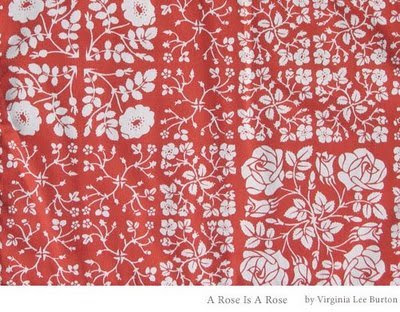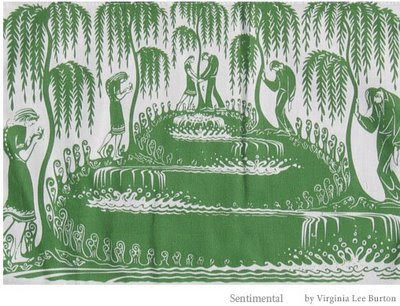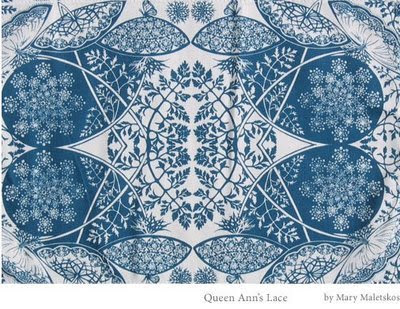


I picked up a book at the local used bookstore yesterday. It was irresistible as it was a book with narrative on a woman illustrator known for her children's books which are timeless. After a few hours, I have put down the book--inspired by the work and life of Virginia Lee Burton, and challenged by what her illustrations can push my own work to be.
First the book:
Virginia Lee Burton: A Life in Art by Barbara Elleman
Amazon's Review sums it up from the School Library Journal:
The creator of Mike Mulligan and His Steam Shovel (1939) and The Little House (1942, both Houghton) played many roles during her too-brief life: dancer, artist, exacting designer and teacher, craftswoman, illustrator, shepherdess, wife, mother, and ebullient hostess. This appreciative biography portrays a gifted artist balancing a successful professional career with family responsibilities at a time when most women chose one over the other. Elleman examines Burton's early work and investigates the genesis of each of her seven picture books, from Choo Choo (1937) to the epic, carefully researched Life Story (1962, both Houghton). She shows how Burton's perfectionism shaped her art, which is characterized by organic movement, rooted in the rhythms of nature, and has "survival through change" as its constant theme. A generous selection of family photos and full-color art from Burton's published and unpublished work, laid out in a handsome, open page design, accompanies the text. Research notes, an index, and an extensive bibliography are appended. This welcome tribute to a beloved artist should be a first purchase.
Margaret A. Chang, Massachusetts College of Liberal Arts, North Adams
Copyright 2002 Reed Business Information, Inc.
What I discovered was a story of a woman, happy in her life, happy in her family, surrounded by nature and children who merged her work in with her life and managed through her hard work to create lasting children's books, pursue teaching and establish a colony of decorative designers/ craftsmen with the Folly Cove Designers. Virginia Lee Burton was the writer / illustrator of the famed Mike Mulligan and His Steam Shovel, Choo Choo, The Little House, Calico the Wonder Horse to name a few.She immersed herself in the research often getting into steam shovels and pulling along her small sons Aris and Mike (the boy the Mike Mulligan book was written for). The boys and friends were more than companions. Virginia would read them her stories (often with cocoa and cookies as the draw) and see how they reacted--bored, alert, twitchy? and would amend her tales according to what the children would directly or indirectly tell her.
She was always challenging herself. The story of how Calico the Wonder Horse evolved is a fine example of that. Her son, Mike, was engaged in comic books and radio dramas and Virginia wanted him to come back to books. So, she developed the Calico book to be set in a graphic novel format, poking fun at the comics and radio (which she listened to and read to fully understand what the appeal was)--making her horse a girl etc. Some of the illustrations from Calico are such a kick in my pants as she is using these decorative shapes to imply energy, to set the subject apart from the frame.
For me, though I bow to the beauty of The Little House, her black and white work is singular. Her work on the Robin Hood illustrations>is the best example of how she pushes and pulls the black and white to bounce one off the other...and how she uses a standard frame shape and device to link her pictures together. She fully understands negative and positive and really unleashes it in this work as well as the obvious outflow into the work of the Folly Cove Designers.
Wikipedia describes the Folly Cove Designers as:
The Folly Cove Designers grew out of a design course taught by Virginia Lee Burton. She lived in Folly Cove, the most northerly part of Lanesville, Gloucester, Massachusetts. She was able to express the local consensus that the world was a beautiful place, and the elements of beauty surround us in nature.
Her block printing thesis grew out of the home industries/arts and crafts movements of the past. The artist/designer of products for home use is separated from the product by machine age technology (and now globalization). Fine art for home use is within our own power. To this end her design course taught an ability to see the design in nature, a set of good design rules (dark and light, sizing, repetition, reflection, etc.), and the craftsmanship of carving the linoleum, and then printing fabric for home use.
On completion of the course the graduate was permitted to submit a design to the jury(selected Designers rotated this responsibility starting in 1943) of the Folly Cove Designers. If it was accepted as displaying the design qualities as taught in the course, then they could carve the design in linoleum and print it for sale as a Folly Cove Design.
The design course started in 1938. In 1940 they had their first public exhibition-in the Demetrios studio. The following year they decided to go public, they called themselves the Folly Cove Designers. Every year they had an opening to present the new designs, and everyone enjoyed the coffee and nisu (Finnish coffee bread). They established a relationship to wholesale their work to the America House of New York which had been established in 1940 by the American Craftsman Cooperative Council. In 1944 they hired Dorothy Norton as an executive secretary to run the business end of the successful young enterprise. In 1945, Lord and Taylor bought non-exclusive rights to five designs which pushed the reputation of the group, and began some national publicity and diverse commissions for their work.
The Home Industries shop in Rockport, Massachusetts, owned by the Tolfords, sold the Designer's work to the public starting in 1943. It wasn't until 1948 that the Designers opened "The Barn" in Folly Cove as their own summer retail outlet. In the late 1950's they extended the season to ten months. Virginia Lee Burton Demetrios died in 1969. The following year the group disbanded, ending a period of unique creativity and cooperation. Some Designers were with the group for only a season and others continued with the group for decades. In 1970 the sample books, display hangings and other artifacts from the Folly Cove Designer's Barn were given to the Cape Ann Historical Association in Gloucester, Massachusetts who are now the primary source for information about the Folly Cove Designers.
The work is wonderful. As fresh as the day it was first printed--and highly collectable. In it's heyday, they were the rage in New York--sold through the America House and Macy's. The prints were printed from hand carved linoleum blocks and printed on linen one at a time. It was suggested they automate to increase production and availability, and it was turned down as it wasn't right for the group. Take a look at the revival page (linked above) and see if you aren't taken with it.
More later. I need to process this more.
